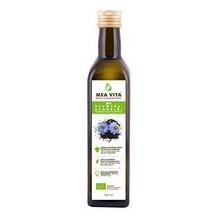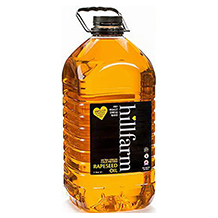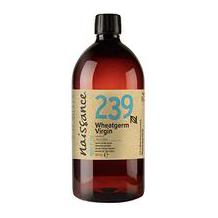Olive oil purchasing advice: how to choose the right product
- What You Need to Know
- Virgin olive oil is an important part of Mediterranean cuisine and helps to give salads, pesto, and pasta dishes their distinctive aroma.
- Cold pressed olive oil is rich in unsaturated fats and valuable nutrients, as well as having health-promoting effects.
- Olive oil must pass through strict EU quality controls. The label must provide information about quality grade, provenance, and shelf life.
- The highest-grade olive oil available is extra virgin. It should be cold pressed and free of impurities.
A healthy treat: olive oil is instantly associated with Mediterranean cuisine and has a provenly positive effect on health and beauty. Whether searching for it online or on supermarket shelves, so much different olive oil is available on the market that we are truly spoilt for choice. Buying the best olive oil is all about knowing how to recognise high-quality olive oil when you see it.
Olive Oil: Healthy and Nutritious Plant Oil
Whether eaten pure with a slice of white bread or used as the basis for pesto or salad dressing, olive oil is ideal for braising, boiling, frying or finishing a dish. Its history can be traced back to ancient times, where the people of the Mediterranean prized olive oil as a source of nutrition and energy. Homer called olive oil “liquid gold”, while Hippocrates was also convinced of its healing properties. And not without reason. Several scientific studies have shown that olive oil has a positive effect on heart health.
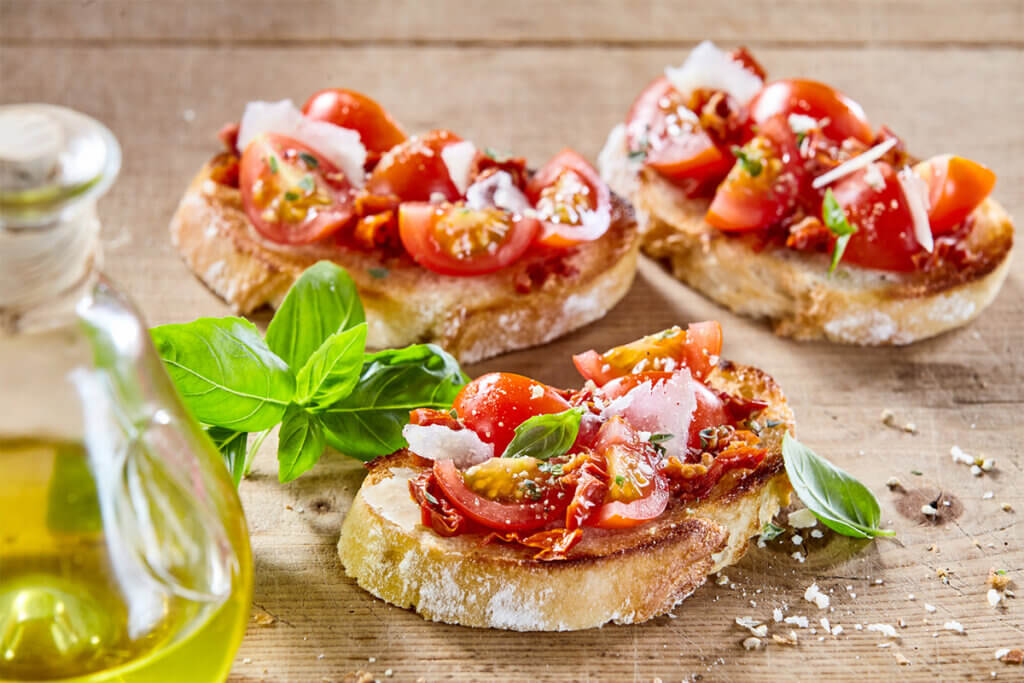
Olive oil can even offer health benefits for dementia, arthritis, obesity, and diabetes. It has been used for hundreds of years for use in personal hygiene and is contained in many high-end cosmetic products.
What’s in Olive Oil
Unsaturated fats, vitamins, and secondary nutrients are all part of olive oil’s benefits for healthy living. Unsaturated fats are good for blood flow, they are anti-inflammatories, and they also help to strengthen the heart. Secondary nutrients like polyphenol, together with the other vitamins contained in olive oil, provide proven defence against free radicals while protecting the body. Vitamin E and other secondary nutrients are largely responsible for the unique taste of olive oil.
The following table shows the nutritional values for one tablespoon of olive oil (15 ml/ 14 g):
| Nutrient | Amount | Percentage of Recommended Daily Intake |
| Calories | 121 kcal | 6% |
| Carbohydrate | 0 g | 0% |
| Fibre | 0 g | 0% |
| Sugar | 0 g | 0% |
| Protein | 0 g | 0% |
| Fat | 1.400 mg | 21% |
| Saturated Fats | 1.900 mg | 9% |
| Polyunsaturated Fats | 1.400 mg | |
| Monounsaturated Fats | 10 mg | |
| Omega-3 | 104 mg | |
| Omega-6 | 1.300 mg | |
| Vitamin E | 2 mg | |
| Vitamin K | 8,2 µg | |
| Cholesterol | 0 g | 0% |
Recognising Good-Quality Olive Oil: The Importance of Production
As with good-quality wine, the provenance, variety, and production of the oil affect the taste, as well as the quality. In November, the olives begin to turn purple. This is the best time for them to be harvested. The harvest is either done by hand, or with the help of machinery. For high-quality olive oils, the whole family or local village is often involved in picking the olives, just like it’s been done for thousands of years.
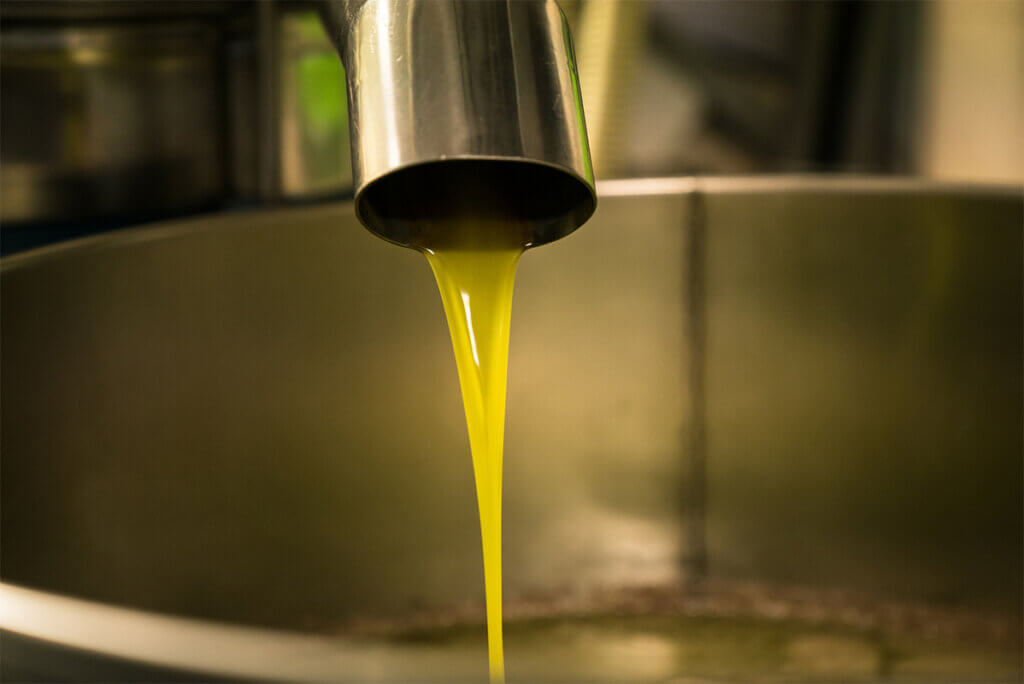
Lots of quality producers employ mechanical help in the form of “vibroli”, or pneumatic combes. Machines which shake the trees are attached to a tractor and used to mechanically collect the harvest, although these machines can only be used on flat terrain.
Once harvested, olives need to be processed as quickly as possible to lock in that classic, olive taste. The extraction of the oil is done exclusively by machines. This can be done either with traditional or modern techniques.
Traditional Method
With this method, oil is extracted by pressing the olive and stone together. The olive paste is then spread out on nylon mats, which are then stacked on hydraulic presses. What comes out of the pulp is a mixture of oil and water, which is then left to rest while the two liquids separate.
Modern Method
Oil extraction is quicker and more efficient with the help of a decanter and centrifuge. The washed olives are crushed, and the resulting olive pulp is then transferred to a centrifuge. Similarly to the spin-cycle of a washing machine, solids are separated from the mixture of water and oil. The oil is then separated out afterwards in another centrifuge.
What Can a Label Tell Us About Provenance and Quality?
Not all olive oil is equal. Only olive oil that is produced to the highest quality and with the correct techniques is guaranteed to taste great and provide the promised health benefits. To ensure this, it’s worthwhile taking a glance at the label. According to EU law, all labels must give the following information:
- The quality grade of the oil
- The producer
- The region in which it was produced/bottled
- The date of bottling
- The expiry date
What Makes a Good Olive Oil? Quality-Grade Metric for Olive Oil
The EU has more requirements for olive oil than for the production of any other food product. EU law makes the distinction between eight different quality grades. These laws determine the maximum values for chemical contents, as well as for correct identification. The oil should also meet certain sensory standards. For the consumer, only the quality grades one, two, and five are of importance. The grading metric is based on manufacturing processes, meaning that within one particular grade there can still be significant differences in quality. We’ll take a closer look at the most important quality grades in the following section:
Extra Virgin Olive Oil
First grade olive oil is extracted directly from the olive through mechanical means without the use of heating equipment. Extra virgin olive oil contains a maximum acidity of 0.8g per 100g. Extra virgin olive oil meets every aspect of the EU oil standards.
Virgin Olive Oil
Virgin olive oil from the second quality grade can be extracted either through physical or mechanical processes. Virgin olive oil can have marginal sensory defects and a slightly inferior chemical quality. It is hardly found on the market.
Olive Oil
This oil from the fifth quality grade is a mixture of industrially produced (refined) and extra virgin olive oil. This type of oil is not common, although it is good for heating, unlike extra virgin olive oil, and has a neutral taste.
Olive Pomace Oil
Olive oil from the eighth quality grade is a mixture of refined olive pomace oil from press kitchens and virgin olive oil. Pomace oil can only be used for frying and is difficult to find on the market. It is extracted from oil remains with the help of solvents.
Whether it’s extra virgin or virgin olive oil that you choose to buy, both are suitable for preparing hot or cold meals. Tasty olive oils can be found in well-stocked supermarkets, as well as delicatessens and off-licenses. With the internet, it’s even possible to buy extra virgin olive oil directly from the manufacturer.
Acidity as a Sign of Quality
The acidity of olive oil is an important sign of its quality as it gives information about the kind of olives used. Generally, the lower the acidity, the higher the quality and fresher the olives used in its production. If over-ripe fruits are used, the acidity rises accordingly. Virgin olive oil shouldn’t have an acidity of more than 0.8g per 100g.
Cold Pressed Olive Oil
The terms “cold pressed” or “cold extract” are signs of quality for high-value extra virgin olive oil. A differentiation is made between cold press and cold extract. With both methods, olive oil is extracted from olive pulp at a maximum temperature of 27°C. During cold pressing, olive pulp is compressed in a hydraulic press. This differs from cold extraction, where a centrifuge is used to separate the oil from the fruit pulp through a fast-spinning drum. Cold pressed and cold extract olive oil both have many plus points, as well as a few drawbacks. These are all shown in the following table.
Advantages
- Higher amounts of vitamin E
- Higher amounts of unsaturated fats
- Fresher, more aromatic taste
- Good for adding that extra touch to dishes
Disadvantages
- Can contain bits of plant residue
- Can contain bits of insecticide and heavy metals
- Cannot be highly heated
Those looking to play it safe with their choice of cold pressed olive oil are advised to opt for an extra virgin organic olive oil.
Sourcing Information: What to Look Out for When Buying
The country of origin and growing region say a lot about the taste and quality of an olive oil. The geographical indication and official stamp give the consumer information about the provenance of the oil they’re buying. Top-grade oil comes from certain countries, or better still, specific regions within these countries. Here we provide a small overview of the logos and symbols which refer to protected growing regions.
The Red Stamp:
This stamp stands for “protected designation of origin” (PDO). These olives come from growing regions determined by the EU. The oil from these regions is extracted and bottled in the region. More commonly seen than PDO is the Italian abbreviation DOP (“denominazione di origine protetta”), which makes sense given that most olive oil is produced in Italy. The following table shows the corresponding identifications in other European countries:
| Country | Abbreviation | Name of the Stamp |
| UK | PDO | protected designation of origin |
| France | AOP | appellation d’origine protégée |
| Spain | DOP | denominación de origen protegida |
| Poland | CNP | chroniona nazwa pochodzenia |
The Blue Logo
This logo stands for “protected geographical indication” (PGI). This kind of olive oil is extracted and bottled in a protected geographical growing region (for instance, Toscana, Provence, or Thasos).
Olive Oil Blends
When information about the manufacturer and the bottling location is missing, this means that the oil in question is a blend. In other words, a mixture out of virgin olive oils from different regions and countries. Unlike with pure olive oils, blends have no taste of their own and instead all taste the same. The origin of blended olive oils is indicated on the label as follows:
- “from Spain” or “from Greece”
- “Mixture of extra virgin olive oils from the EU”
- “EU/Blend”
- “Mixture of extra virgin olive oils from Italy and Greece”
Organic Label
Organic olive oils come from ecologically controlled growing facilities and are subject to strict guidelines and controls. When buying organic olive oil, you can be sure that it was made without the use of artificial fertilisers or pesticides. Organic olive oil with the Demeter or Bioland label go through even tougher controls.
Different Terms for High-Grade Olive Oil:
Germany: Natives Olivenöl extra
Italy: Olio extra vergine di oliva
Spain: Aceite de oliva virgen extra
France: Huile d’olive extra vierge
UK: Extra virgin olive oil
More Tips for Buying Olive Oil
The following tips can help you navigate the olive oil landscape and buy the most appropriate, high quality product:
- Only buy extra virgin olive oil, unless it is meant of strong heating.
- Pay attention to correct labelling, which should include identification, provenance, and shelf life.
- Get informed about the taste of a particular oil before you buy it to avoid disappointment.
- This is not the time to save. Quality comes at a price.
- Cheaper olive oils are good for frying.
- Store olive oil in a cool dry place.
- Peppery notes are a sign of a quality olive oil.
Pricing: How Much Does a Good Olive Oil Cost?
Does good olive oil have to be expensive? This is a completely natural question to ask, given that the price per litre of olive oil ranges from anywhere between £5 to £35. Is the price a good signal of quality? Yes, at least according to Stiftung Warentest (Germany’s leading consumer organisation) in their latest round of olive oil testing. Anyone who takes the trouble to look at the lengthy manufacturing process of olive oil will realise that good-quality olive oil comes at a price.
The olives used for extra virgin olive oil are harvested by hand. It goes without saying that these kinds of high-quality products are not going to be available for under £10. The provenance, amount produced, and taste are reflected in the price. Expensive olive oils usually set themselves apart from their discount counterparts through their special aroma. This is because mass production of olive oil is usually done at the expense of quality and taste. This is another reason to pay a little more for extra virgin olive oil which lives up to its billing.
To conclude, good-quality extra virgin olive oil can be bought for about a minimum of £8 per litre. Excellent quality extra virgin olive oil from small manufacturers can be bought for about £16 per 500 ml, although there are no upper limits on price.
Cheaper Olive Oils Are Still Good for Frying
Like a good-value table wine, experts from Stiftung Warentest have called mid-range organic olive oils good for cooking. Under high temperatures, the fine nuances of taste in high-quality oils are no longer perceptible.
Finding the Right Olive Oil for Every Palate
Intensely fruity or mild with a hint of spice? Like wines, there are big taste differences between different olive oils. Provenance, type of olive, manufacturer, and climate all have significant effects on the taste of the oil.
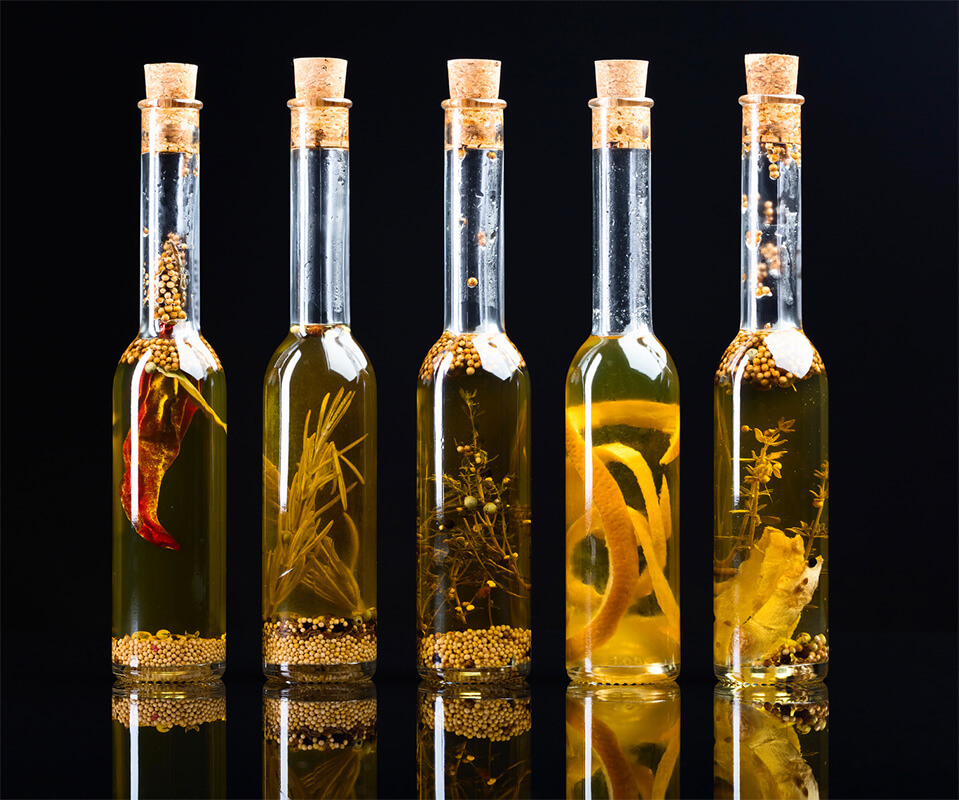
A good olive oil is recognisable by its pleasant, mild, or intensively fruity aroma. Olive oil pressed from green olives is a little bitter and a little spicy. A little spice is a sign of a particularly high-quality olive oil. Peppery and fruity aromas are less prominent in oils made from riper olives. These types of oil are subtly fruity and significantly milder. Low-quality or incorrectly stored olive oil often tastes gone off, mouldy, or soured.

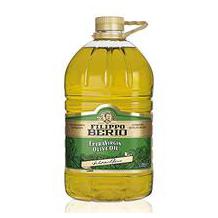
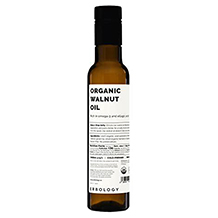
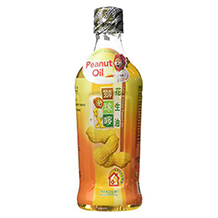
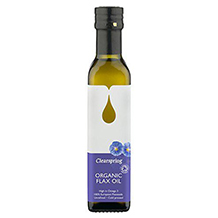


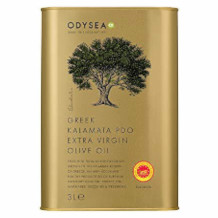
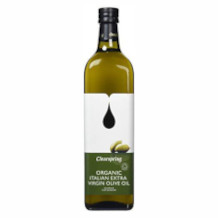
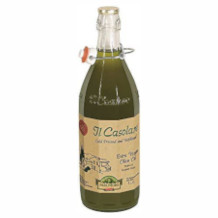
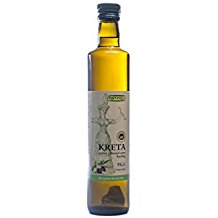
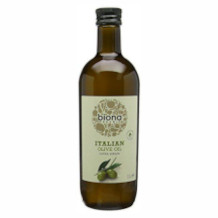

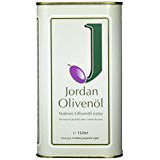
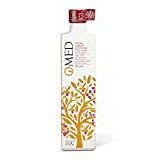
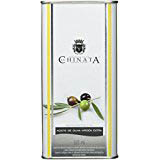
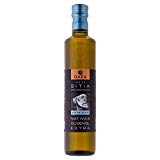
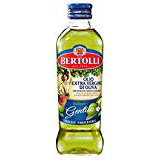
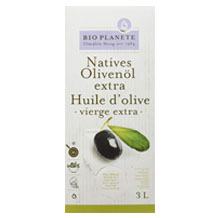

 688 reviews
688 reviews

